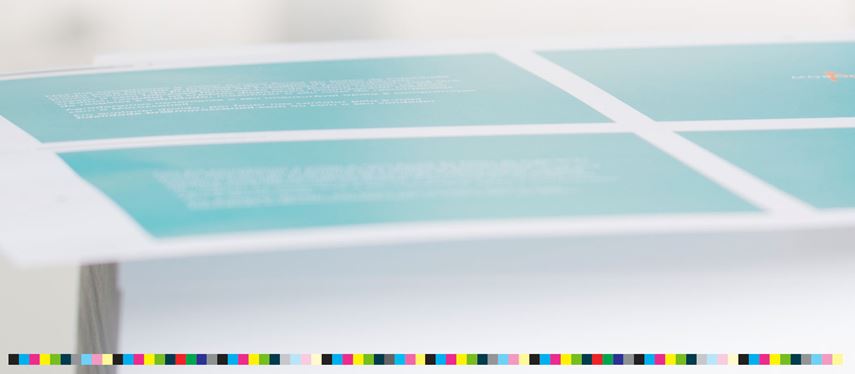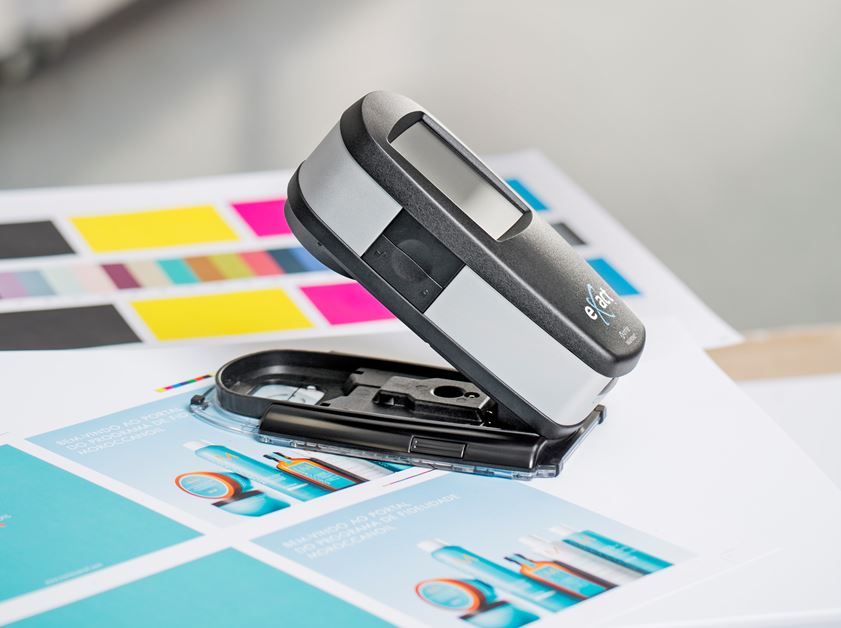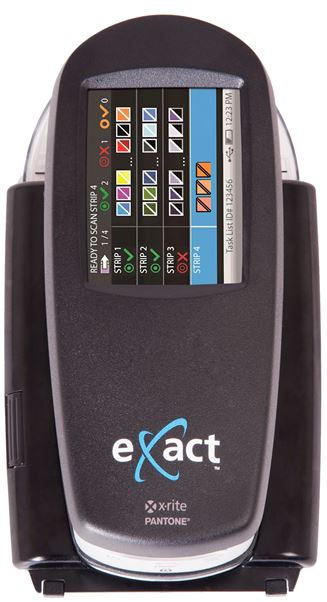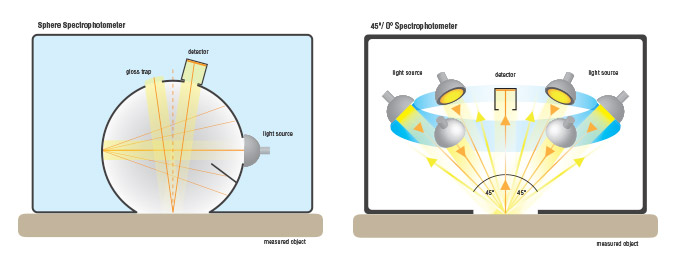In a perfect world, you should be able to put ink in the press and run a job. Unfortunately, there are so many variables that affect color that printing operations often waste thousands of pounds of substrate, and thousands of dollars in press time, making adjustments.
Advancements in technology have made it easier to measure color, but the variables still exist. To help you over come them, we’ll be featuring a series that points out many of the reasons your color could go wrong at press side.
We’ll start with five tips for using your spectro.
-
Use the right backer.
The backing material underneath your print sample is very important because it ensures the spectro is only reading the color you want it to measure.
To see what I mean, hold your print sample in the air and take a reading while looking at the back. You’ll probably see the light shining right through. That means when you’re reading a sample without using a backer, the light from the device is reflecting right back into the instrument, skewing your results. This is a very common and often overlooked problem.
A stainless steel table, wooden workbench, or stack of press sheets is not a correct backing material for reading samples. For consistency, you should always use the same black or white backer. You can purchase ISO certified backing materials, but they can be expensive. Another option is to purchase ceramic tiles from the hardware store, but you must make sure they are all from the same lot number.
ISO provides L*a*b* values for both black and white backers, and G7 provides targets values based on white backers. Make sure to use the correct target values for the backer that you are using. Generally speaking, a black backer is best when printing on both sides of media, or when measuring density. Many time specifications require one or the other, so you need to confirm.
Remember to enter your standards using the same backing material you’re using for your samples.
-
Make sure your spectro is in good working condition, and that you’re using it correctly.
A poorly calibrated instrument, especiallyone that has been dropped, can lead to some bad color readings at press. If your instrument is reading incorrectly, and calibration is NOT checked closely, the ink techs could be toning colors that don’t need to be toned just so the software says it’s correct.
Always pay attention to your calibrations to make sure they’re in line to prevent this from happening. If your instrument fails calibration, or your readings continue to be far off, the unit could be due for service. X-Rite offers lots of options for service and certification.
-
Choose the correct instrument geometry.
One of the most important factors to consider when choosing a spectro is the type of surface you’ll be measuring. There are three primary types of spectrophotometers: 0/45°, spherical, and multi-angle – the name describes the way each device measures color.
Although 0/45°s are commonly used in print and packaging, they won’t work for highly reflective materials, like metalized poly, foil balloons, because the light from the spectro will bounce off the flakes in radical directions. A lot of printers still use a 500 series or eXact instrument on metallic inks with limited success. The device will take the readings, but the user will usually get inconsistent data depending on the reflectance of the metallic flake. For these applications you need a sphere geometry spectrophotometer, such as an SP62, SP64, or a Ci64.
-
Use the right filter.
More printers are starting to set their instruments to M1 to adjust for optical brighteners found in paper, and the industry, including GRACoL, is starting to lean toward adopting this setting, too. If your operation hasn’t made the switch, you still need to be aware of the m-standards because some standards might have been entered using M0, M1, M2, or M3.
Be aware of these M-Settings in coordination with your operation. If you make the switch, you will most likely be re-entering a lot of standards.
-
Pay attention to illuminant settings.
Printing facilities usually check colors under a D65 illuminant, 10° observer (noon sunlight), or a D50 illuminant, 2° observer (horizon sunlight). But when choosing an illuminant and observer, you need to know how your standards and samples are being read. You must also read your sample using the same method as your standard. Some customers specify unique tolerances ahead of time. If not, ask.




